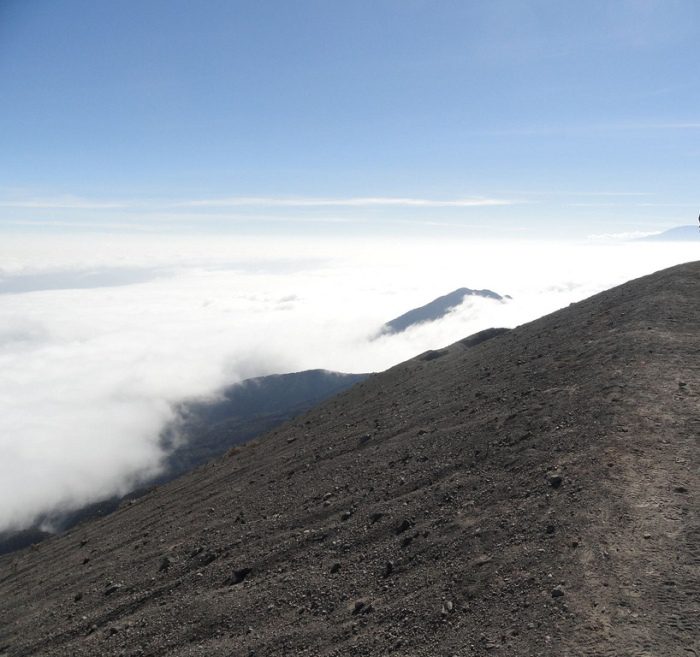Itinerary Summary
Climbing mount Meru you pass through forest with strange trees, a giant heather zone and rocky moorland. Along the trail over 400 species of birds, buffalos, baboons and giraffes can be found.
Weather permitting, Kilimanjaro can be seen in the West. There are two huts available to climbers on the mountain and firewood is supplied. The best time to climb Meru is between October and February. But also June to September.
Itinerary Details
Day 1:Drive to Momella Gate
After breakfast, we drive to Momella Gate.
Momella Gate is located near Shamba La Mbogo, a natural glade in the Mt. Meru Game Reserve. It is situated at 1,500m above sea level. Two routes are available from Momella Gate: The first route goes through the forest towards the crater floor and then steeply up to Miriakamba Hut. The second option climbs gradually through the grassland direct to Miriakamba Hut.
We register at park gate and start trekking accompanied by an armed ranger. We will ascend up to Miriakamba Hut situated at 2,500m above sea level. The trekking takes approximately 3 hours. We will be walking between the montane forest where various species of flora and fauna can be found on this part of the mountain. There are beautiful views of Arusha National Park’s various landscapes that can be seen from this trek and, if the sky is clear of clouds, spectacular views of Mt. Kilimanjaro can also be seen.
Day 2: Miriakamba Hut .
From Miriakamba Hut the path is steep compared to other mountains in the region. We continue our ascent on a narrow winding trail through a thick montane forest, where various species of vegetation can be seen. There are water streams that we cross before approaching the moorland zone. A good view of Little Meru can be seen on a clear day, just as you approach Saddle Hut.
The ascent takes approximately 4 hours. After our arrival at Saddle Hut (3,500m), you have the option to embark on a 45 minute walk to Little Meru (3,820m). It has a meandering trail which is aided with good grass cover to give you good grip. One can see the Kenyan border from the peak of Little Meru, Ngara Nanyuki –
Day 3: Big Meru, the summit of Mt. Meru (4,566m)
Our ascent to Big Meru, the summit of Mt. Meru (4,566m) begins at around midnight and takes us from the moorland zone to alpine desert zone. The trek will take approximately 6-
Option: You can climbing mount Meru for 4 days then on third day, descend to saddle hut for overnight. And on 4th day descend to Arusha park gate.
Climbing Pricing Terms
Price Includes the Following:
- Local Taxes and park fees
- Transfers to and from Airport
- Hotel a night before and after the climb (BB)
- Transfer from your hotel to and from starting point
- Kilimanjaro National Park rescue fees (Kilimanjaro Rescue Team)
- Basic first aid kit (for use in emergencies only)
- Qualified English Mountain guide, assistant guides, porters and cook (Other languages on special request)
- Salaries for mountain crew as per guidelines set by Kilimanjaro National Park
- Breakfast, lunch and dinner, as well as hot drinks on the mountain
- Camping equipment (tents, camp chairs, tables)
- Water for washing up daily
- Porter to carry your duffel bag (max weight 15kg / 32 lbs) from one camp to the next camp.
- Kilimanjaro National Park certificate for your successful summit attempt
The Price Excludes the Following:
- Flights and airport taxes
- Compulsory tips for guides, porters and cook
- Highly recommended travel and medical insurance.
- Personal hiking/trekking gear – we can rent some of the gear from our equipment store in Tanzania
- Snacks, personal medicine and water purifying tablets
- Any items and or requirements of a personal nature

